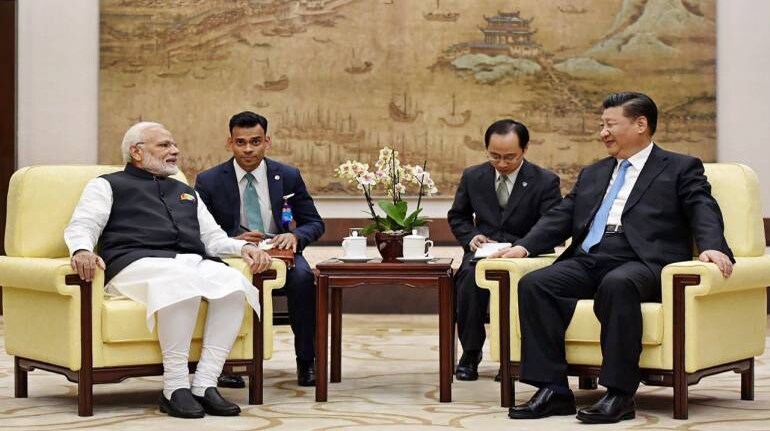
Chinese incursions along the border with India and an extreme step to unleash brutality at Ladakh reveal its fears.
As apparent in the past two years, China is under overwhelming pressure to out-sustain the myriad of internal accidents and external pressure. The dependency on the Chinese economy is no more indispensable. With the trade war, Hong Kong protests, depleting forex reserves, cut down in supply chains, the steep increase in unemployment, these are bleak times for the Chinese leadership. While China brags about a shared dream and prosperity, the spectre of rancour it puts on display threatens self-inflicting damage.
China played out its role smartly across global and regional platforms, as well as in setting up the bilateral standards portraying itself as the chief or only source of prosperity for most of its trade partners. China had been enjoying the trade surplus with India ever since two countries set up businesses. The dependency intensified at the backdrop of the hardening of the Chinese position on nearly everything — be it boundary talks, Nuclear Suppliers Group (NSG), United Nations Security Council (UNSC) expansion, trade negotiations, Regional Comprehensive Economic Partnership (RCEP) and so on.
One needs to look at the spectrum of events with an inverted logic. What does China have at stake, and does the model of trade between India and China hold any long-term interests for China?
Since early 2000, India’s discernment in transacting with China was open, and did not mirror political anxieties. On the contrary, China looked at India as a potential market and strategic rival. Despite being an emerging economy, India had to suffer from China’s currency manipulation, hidden subsidies, and trade barriers, government-procurement rules leading to asymmetric engagement.
At the multilateral level, China used the dependency factor to garner global support. The Asia Infrastructure Investment Bank (AIIB) and the New Development Bank (NDB) do glorify ‘cross-fertilization of ideas’, but the Chinese might is irrefutable. India does hold its reservations over the Belt and Road (BRI) plans, but primarily shares principles of connectivity projected through the AIIB- and the NDB-led programmes. China pushed its ambitious reform agenda through BRICS as well, where India does play an important role, proposing a 7 percent shift in the International Monetary Fund (IMF) voting power to achieve a 50/50 balance between the developed and developing world.
In 2016, Chinese held rounds of discussions to persuade India to support the RMB to be included in the IMF’s special drawing rights (SDRs). India, being one of the major trading partners of China, did exert considerable influence on the RMB’s weight in the currency basket between 2005 and 2018.
Moreover, climate change talks too witnessed how China would go solo to negotiate with the United States, and dump the collective agenda. China had been eager to leverage India’s global standing to join the league of platforms and navigate its benefits. China would not have even recognised the existence of India, had India not had the growth projections, economic promise, and value as a trading partner. More importantly, China realised that India had soft power in abundance.
In the past two decades, the Chinese presence in India increased significantly. One cannot deny the fact that the flare-ups at the Line of Actual Control (LAC) will threaten the already moribund economic engagements owing to the COVID-19 threat. It needs to be noted that the Chinese have developed stakes in the Indian market, and the tensions are going to affect Chinese equally.
At the bilateral level, India offers growth prospects to the growing number of Chinese businesses. In 2019, bilateral trade reached $92.81 billion. The investment of Chinese companies in India has been increasing in recent years. According to the data published by China Global Investment Tracker (CGIT), the Chinese investment projects in India amounted to $14.5 billion between March 2007 and December 2019. The sectors in China’s focus included energy, telecommunications technology, consumer goods, metal smelting, and real estate.
According to CGIT statistics, in the past three years, the total scale of China’s investment projects in India reached $9.5 billion. According to the NSE economic database, India’s foreign direct investment from China stood at Rs 7.74 billion ($101 million) by the end of December 2019. India may pose a challenge by intimidating China to foresee a dilemma when decoupling unfolds and the Chinese businesses are forced to find alternatives. On the other hand, one needs to think beyond institutional self-idolisation when it comes to practice and performance of industry-related policies in India.
The continuing threats at the LAC is one of the aspects of undeniable fear the Chinese are experiencing vis-à-vis unfolding global realities. The Chinese stand over the LAC with India offers a glimpse of a newly forceful brand of Chinese diplomacy. With the rising inconsistencies in its BRI projects, the accusation of debt traps by the BRI subscriber countries illustrates this better.
India’s wish to decouple from the Chinese economic dependencies is undoubtedly welcome, but is away from the dynamism it requires. The trade dependencies on China invoke feelings of superiority, close to contempt, when the regime is impatient to take offence and retaliations. Whether China can be trusted and partnered with remains a question. The prognosis would help us look at the series of events as a clarion call for action.
Aravind Yelery is Senior Fellow, HSBC Business School, Peking University. Views are personal.

Discover the latest business news, Sensex, and Nifty updates. Obtain Personal Finance insights, tax queries, and expert opinions on Moneycontrol or download the Moneycontrol App to stay updated!